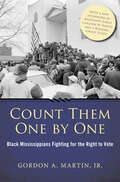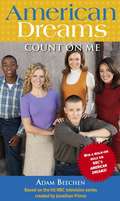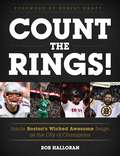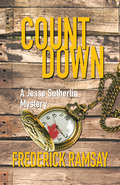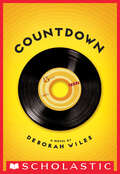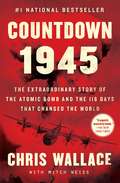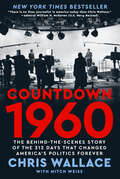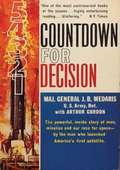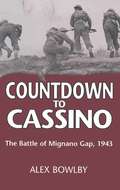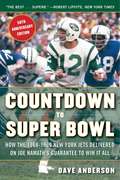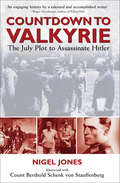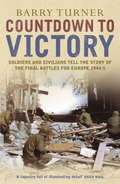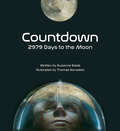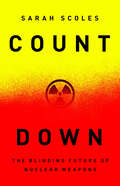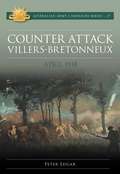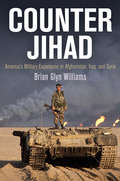- Table View
- List View
Count Luna
by Alexander Lernet-HoleniaAt once a chase novel, black comedy, and softly keening death song, Count Luna starts off at a gallop and accelerates into warp speed. At the start of WWII, Alexander Jessiersky, an Austrian aristocrat, heads a great Viennese shipping company. He detests the Nazis, and when his board of directors asks him to go along with confiscating a neighbor’s large parcel of land for their thriving wartime business, Jessiersky refuses. Yet, without his knowledge, the board succeeds in sending the owner of the land, a certain Count Luna, to a Nazi concentration camp on a trumped-up charge. Years later the war is over, but after a series of mysterious events, Jessiersky, deeply paranoid, becomes convinced that Count Luna has survived and seeks vengeance; driven to kill the source of his dread, he decides to hunt down Luna—and his years-long chase after the spectral count finally takes him deep into the catacombs of Rome… The nightmare logic of Count Luna comes from deep within Jessiersky’s festering fears and serves up his brooding, insanity-spiced, delicious disquisitions—on what the Etruscans knew, on cemeteries as originally “sleeping places”—before coming at last to death itself: “Well, well, well, thought Jessiersky, swallowing hard. So you do die after all. You refuse to believe that someday you will die but then you die. And you don’t even notice it. And yet the fact that you don’t is the best thing about dying...”
Count Them One by One: Black Mississippians Fighting for the Right to Vote (Margaret Walker Alexander Series in African American Studies)
by Gordon A. Martin Jr.Forrest County, Mississippi, became a focal point of the civil rights movement when, in 1961, the United States Justice Department filed a lawsuit against its voting registrar Theron Lynd. While thirty percent of the county’s residents were Black, only twelve Black people were on its voting rolls. United States v. Lynd was the first trial that resulted in the conviction of a Southern registrar for contempt of court. The case served as a model for other challenges to voter discrimination in the South and was an important influence in shaping the Voting Rights Act of 1965. Count Them One by One is a comprehensive account of the groundbreaking case written by one of the Justice Department’s trial attorneys. Gordon A. Martin, Jr., then a newly minted lawyer, traveled to Hattiesburg from Washington DC to help shape the federal case against Lynd. He met with and prepared the government’s sixteen Black witnesses who had been refused registration, found white witnesses, and was one of the lawyers during the trial. Decades later, Martin returned to Mississippi and interviewed the still-living witnesses, their children, and friends. Martin intertwines these current reflections with a commentary about the case itself. The result is an impassioned, cogent fusion of reportage, oral history, and memoir about a trial that fundamentally reshaped liberty and the South.
Count on Me (American Dreams)
by Adam BeechenMeg Pryor's life has really changed. Her brother's been shipped off to Okinawa, she broke up with Luke, and she's dating a college guy, Drew. He's unlike anyone Meg's ever known. Well informed and socially conscious, Drew has taught her to question the things she used to accept unhesitatingly. For the first time in her life, Meg can actually feel herself growing up. But when Meg gets involved in a rally that Drew's planning on campus, she never expects it to hurt people she cares about. And she certainly doesn't expect to start feeling like Drew's more interested in his cause than in her. But he is right about one thing: Meg has to form her own opinions and start thinking for herself if she's really going to grow up and be taken seriously.
Count the Rings!: Inside Boston's Wicked Awesome Reign as the City of Champions
by Bob HalloranA boastful, fully illustrated, Boston fan&’s celebration of the most amazing run of sports dominance any city has seen: 10 championships from 4 teams in just 16 yearsThe perfect gift for the Boston sports fan—a full-color, illustrated celebration of the city&’s historic, unprecedented run of sports championships since the 2001-02 football season: 16 years and 10 championships from 4 teams. The champion New England Patriots (2001, 2003, 2004, 2014, 2016), Boston Red Sox (2004, 2007, 2013), Boston Celtics (2008), and Boston Bruins (2011)—each season detailed through the key moments fans will want to replay again and again. Packed with color photography and sidebars, the book captures the transformation of Boston into Title Town!
Countdown (Jesse Sutherlin Mysteries #2)
by Frederick RamsayIt's 1928, Jesse Sutherlin now has his own family and has made a success at the sawmill below Virginia's Buffalo Mountain working for JG Edwards. The country's economy is booming. And then David Privette, the sheriff who succeeded Dalton P. Franklin with whom Jesse had a run-in or two in Copper Kettle, arrives with surprising news - the body of Jesse's father has just been discovered in the pit at Smith's West Oxford Street ice house operation. How could this be? In 1918 a man had brought the family the news that Sutherlin, Sr., had died of the Spanish flu while seeking work up in Norfolk, Virginia. Sheriff Privette doesn't take a deep interest in this cold crime, but Jesse is not letting it go. The body has been found with a money belt fat with fifty dollars, a small fortune. Twenty of the seventy dollars that Sutherlin Sr. was carrying is missing. So is his heirloom watch given to him for "thirty years' service in the AM and O Railroad which is now the Norfolk and Western. It was gold and big as an onion." What happened to the money and to "the Onion"? Was all this the work of a thief? Who was the man who showed up at the Sutherlins' door? There's not much to work with. But that won't stop Jesse who investigates as the 1928 boom progresses relentlessly toward 1929. "Eight years after Copper Kettle we drop in on Jesse Sutherlin and his wife Serena, plagued by murders old and new beneath the advancing shadow of the Great Depression. Plot, characters, voice all still at that same gold standard Ramsay set from first book to this, his last." --Dana Stabenow, bestselling author of the Kate Shugak Series
Countdown (The Sixties Trilogy #1)
by Deborah WilesThe story of a formative year in 12-year-old Franny Chapman's life, and the life of a nation facing the threat of nuclear war.Franny Chapman just wants some peace. But that's hard to get when her best friend is feuding with her, her sister has disappeared, and her uncle is fighting an old war in his head. Her saintly younger brother is no help, and the cute boy across the street only complicates things. Worst of all, everyone is walking around just waiting for a bomb to fall. It's 1962, and it seems that the whole country is living in fear. When President Kennedy goes on television to say that Russia is sending nuclear missiles to Cuba, it only gets worse. Franny doesn't know how to deal with what's going on in the world -- no more than she knows how to deal with what's going on with her family and friends. But somehow she's got to make it through. Featuring a captivating story interspersed with footage from 1962, award-winning author Deborah Wiles has created a documentary novel that will put you right alongside Franny as she navigates a dangerous time in both her history and our history.
Countdown 1945: The Extraordinary Story of the Atomic Bomb and the 116 Days That Changed the World (Chris Wallace’s Countdown Series)
by Chris WallaceFrom Chris Wallace, the veteran journalist and anchor of Fox News Sunday, comes an electrifying behind-the-scenes account of the 116 days leading up to the American attack on Hiroshima. <p><p> April 12, 1945: After years of bloody conflict in Europe and the Pacific, America is stunned by news of President Franklin D. Roosevelt’s death. In an instant, Vice President Harry Truman, who has been kept out of war planning and knows nothing of the top-secret Manhattan Project to develop the world’s first atomic bomb, must assume command of a nation at war on multiple continents—and confront one of the most consequential decisions in history. Countdown 1945 tells the gripping true story of the turbulent days, weeks, and months to follow, leading up to August 6, 1945, when Truman gives the order to drop the bomb on Hiroshima. <p> In Countdown 1945, Chris Wallace, the veteran journalist and anchor of Fox News Sunday, takes readers inside the minds of the iconic and elusive figures who join the quest for the bomb, each for different reasons: the legendary Albert Einstein, who eventually calls his vocal support for the atomic bomb “the one great mistake in my life”; lead researcher J. Robert “Oppie” Oppenheimer and the Soviet spies who secretly infiltrate his team; the fiercely competitive pilots of the plane selected to drop the bomb; and many more. Perhaps most of all, Countdown 1945 is the story of an untested new president confronting a decision that he knows will change the world forever. Truman’s journey during these 116 days is a story of high drama: from the shock of learning of the bomb’s existence, to the conflicting advice he receives from generals like Dwight D. Eisenhower and George Marshall, to wrestling with the devastating carnage that will result if he gives the order to use America’s first weapon of mass destruction. <p> But Countdown 1945 is more than a book about the atomic bomb. It’s also an unforgettable account of the lives of ordinary American and Japanese civilians in wartime—from “Calutron Girls” like Ruth Sisson in Oak Ridge, Tennessee, to ten-year-old Hiroshima resident Hideko Tamura, who survives the blast at ground zero but loses her mother and later immigrates to the United States, where she lives to this day—as well as American soldiers fighting in the Pacific, waiting in fear for the order to launch a possible invasion of Japan. Told with vigor, intelligence, and humanity, Countdown 1945 is the definitive account of one of the most significant moments in history. <p><b>A New York Times Bestseller</b>
Countdown 1960: The Behind-the-Scenes Story of the 312 Days that Changed America's Politics Forever
by Chris WallaceAn Amazon Best Book of the MonthA riveting new work and fresh take on the lead-up to the presidential election of 1960, drawing timely parallels to the choice Americans face in 2024It&’s January 2, 1960: the day that Massachusetts Senator John F. Kennedy declared his candidacy; and with this opening scene, Chris Wallace offers readers a front-row seat to history. From the challenge of primary battles in a nation that had never elected a Catholic president, to the intense machinations of the national conventions—where JFK chose Lyndon Johnson as his running mate over the impassioned objections of his brother Bobby—this is a nonfiction political thriller filled with intrigue, cinematic action, and fresh reporting. Like with many popular histories, readers may be familiar with the story, but few will know the behind-the-scenes details, told here with gripping effect. Featuring some of history&’s most remarkable characters, page-turning action, and vivid details, Countdown 1960 follows a group of extraordinary politicians, civil rights leaders, Hollywood stars, labor bosses, and mobsters during a pivotal year in American history. The election of 1960 ushered in the modern era of presidential politics, with televised debates, private planes, and slick advertising. In fact, television played a massive role. More than 70 million Americans watched one or all four debates. The public turned to television to watch campaign rallies. And on the night of the election, the contest between Kennedy and Nixon was so close that Americans were glued to their televisions long after dawn to see who won. The election of 1960 holds stunning parallels to our current political climate. There were—potentially valid—claims of voter fraud and a stolen election. There was also a presidential candidate faced with the decision of whether to contest the result or honor the peaceful transfer of power.
Countdown For Decision
by Maj.-General J. B. MedarisThe inside story of men, missiles and our race for space by the man who launched America's first satellite.John Bruce Medaris (May 12, 1902 - July 11, 1990) retired a Major General in the United States Army. During World War II he became a highly decorated colonel in the ordnance corps, serving in every campaign from North Africa to Sicily, Normandy, the Battle of the Bulge, and invasion of Germany. In 1955 he assumed command of the Army Ballistic Missile Agency. Under his supervision Wernher von Braun and the Rocket Team developed the Jupiter missile which launched the first U.S. earth satellite into orbit in 1958. Medaris went on to play a role in the post-Sputnik debates over how the U.S. government ought to respond to the Soviet challenge. When the Eisenhower administration decided to create a civilian space agency, assigned long-range ballistic missiles to the Air Force and Navy, then transferred the Huntsville Rocket Team to the NASA. Derived from a Kirkus review: The Army's recently retired top missile-and-ballistics man, Major General Medaris, tells the story of the missiles race of the last five years, and makes some predictions about the future. Beginning with a brief personal history, coinciding with the development of rocketry through Dr. Robert Goddard and Werner von Braun, he then goes into specific detail of the years 1956-59, during which time he ran the rockets from the Redstone Arsenal and Cape Canaveral. Some of the heroes are men like Colonel Nickerson; Secretary McElroy; and von Braun. Other heroes are the missiles themselves—Nike, Bomarc, Jupiter, Titan, and a dozen more—whose history and sometimes frustrating failure Medaris recounts. The General sounds the alarm against complacency, and against bureaucracy. Unless, he says, men of decision and intelligence are allowed to carry out a balanced, imaginative rocket program, the power will soon shift decidedly to Russia. Well worth reading.-Print ed.
Countdown bin Laden: The Untold Story of the 247-Day Hunt to Bring the Mastermind of 9/11 to Justice (Chris Wallace’s Countdown Series)
by Chris WallaceOn August 27, 2010, three CIA officers ask for a private meeting with CIA Director Leon Panetta. During that secret session, they tell Panetta that agents have tracked a courier with deep Al Qaeda ties to a three-story house at the end of a dead-end street in Abbottabad, Pakistan. But they say it’s more than a house—it’s a heavily protected fortress. No one in the meeting says the name bin Laden. They don’t have to. Everyone understands that finally, after nearly a decade, maybe, just maybe, they’ve found the world’s most wanted man. <P><P> In Countdown bin Laden, celebrated journalist and anchor of Fox News Sunday Chris Wallace delivers a thrilling new account of the final eight months of intelligence gathering, national security strategizing, and meticulous military planning that leads to the climactic mission when SEAL Team Six closes in on its target. The book delivers new information collected from Wallace’s in-depth interviews with more than a dozen central figures, including Admiral William H. McRaven—leader of the operation in Pakistan—as well as CIA Director Panetta, Secretary of State Hillary Rodham Clinton, Defense Secretary Robert Gates, National Security Advisor Tom Donilon, and two members of SEAL Team Six who participate in the raid, including the special operator who kills Osama bin Laden. Wallace also brings to life the human elements of this story, talking to families who lost loved ones on 9/11, sharing what relatives of SEAL Team Six went through, and bringing us inside the tense Situation Room during the raid. Published on the twentieth anniversary of 9/11, Countdown bin Laden is a historical thriller filled with intrigue, cinematic action, and fresh reporting about the race to apprehend and bring to justice the mastermind of the most consequential terrorist attack in American history. <P><P><b>A New York Times Best Seller</b>
Countdown to Cassino: The Battle of Mignano Gap, 1943
by Alex BowlbyIn the autumn of 1943 the German Bernhardt Line ran through Mignano Gap, 12 miles south-west of Cassino. XIV Panzer Korps was to make a stand there, holding up the advancing US 5th Army - two thirds American, one third British - whilst Cassino was being fortified. If the 5th Army broke through Mignano Gap before Cassino's fortifications were really strong, Allied armour would smash its way through the town and go on to take Rome. Drawing on the memories of veterans who fought at Mignano Gap, and on extensive archive research, this book presents a wide-ranging account of this major battle, and describes how close the 5th Army came to making the crucial breakthrough. The author served with the Green Jackets in World War II and his 1969 publication, "The Recollections of Rifleman Bowlby", was republished 20 years later.
Countdown to Dallas: The Incredible Coincidences, Routines, and Blind "Luck" that Brought John F. Kennedy and Lee Harvey Oswald Together on November 22, 1963
by Paul BrandusJohn F. Kennedy&’s fascination with death—particularly his own—and Lee Harvey Oswald&’s love of violence and desire for fame made November 22, 1963 practically inevitable.With new details from the very latest documents declassified by the CIA and FBI! The so-called &“crime of the century&”—the assassination of President John F. Kennedy—was almost preordained to happen. Like all presidents from decades before him, JFK played it loose with security—open cars, Secret Service agents at a distance, and a desire to be seen. Yet conspiracy buffs are certain the security setup on November 22, 1963 was unusual and suspicious. It wasn&’t. And what of Lee Harvey Oswald, the drifter, the vicious wife-beating, fame-seeking narcissist? Everything in his background—dating back to his violent, disturbing grade school years, including his stated desire to murder President Dwight Eisenhower—defines the real Lee Oswald. The Oswald that conspiracists rarely talk about—the Oswald who was perched in the sixth floor of the Texas School Book Depository as JFK drove by—was headed for this moment of infamy years before he pulled the trigger. In Countdown to Dallas, author Paul Brandus tracks the backgrounds of both Kennedy and Oswald, the very different era in which they lived, and the incredible string of circumstances that brought them together for a few fateful moments in Dallas. He reveals: There was indeed a second person on the 6th floor of the Texas School Book Depository in the minutes prior to the assassination—but it&’s not what you think. How Oswald REALLY got his job at the Depository. The OTHER president that Oswald previously discussed wanting to kill. What Oswald&’s favorite TV show and favorite opera reveal about his personality and his willingness to use violence. The sinking of the Titanic—and how we process it more than a century later—is an example of how we continue to process information about the Kennedy assassination.
Countdown to Pearl Harbor: The Twelve Days to the Attack
by Steve TwomeyA fascinating look at the twelve days leading up to the Japanese attack on Pearl Harbor--the warnings, clues and missteps--by a Pulitzer Prize-winning reporter.In Washington, DC, in late November 1941, admirals compose the most ominous message in Navy history to warn Hawaii of possible danger, but they write it too vaguely. They think precautions are being taken, but never check to see if they are. A key intelligence officer wants more warnings sent, but he is on the losing end of a bureaucratic battle and can't get the message out. American sleuths have pierced Japan's most vital diplomatic code, and Washington believes it has a window on the enemy's soul--but it does not. In a small office at Pearl Harbor, overlooking the battleships at the heart of America's seafaring power, the Commander of the Pacific Fleet tries to figure out how much danger he really faces. His intelligence unit has lost track of Japan's biggest aircraft carriers, but assumes they are resting in a port far away. The admiral thinks Pearl is too shallow for torpedoes, so he never puts up a barrier. As he frets, a Japanese spy is counting the warships in the harbor and reporting to Tokyo. There were false assumptions, and racist ones: The Japanese aren't very good aviators and they don't have the nerve or the skill to attempt a strike so far from their home. There were misunderstandings, conflicting desires, painful choices. And there was a naval officer who, on his very first mission as captain of his very first ship, did exactly the right thing. His warning could have averted disaster, but his superiors reacted too leisurely. Japanese planes arrived moments later. Twomey's telescoping of the twelve days leading to the attack unravels the crucial characters and moments, and produces an edge-of-your seat drama with fascinating details about America at this moment in its history. By the end, the reader understands how assumption is the root of disaster, and how sometimes a gamble pays off.
Countdown to Super Bowl: How the 1968-1969 New York Jets Delivered on Joe Namath's Guarantee to Win it All
by Dave AndersonCountdown to Super Bowl tells the whole story of the game of the century, written by the man who followed every movement of the Jets from the first kick-off of the season, who lived, breathed, and agonized with them for the ten nerve-tingling days before the Colts went down to defeat in the Super Bowl. Here, by Dave Anderson of the New York Times, is the play-by-play, moment-by-moment saga of how Super Joe Namath and the Jets made good Namath’s boast that they would humble the NFL and vanquish the invincible Colts. This book provides all the color, the action, and the behind-the-scenes drama of the greatest upset in football history. In celebration of the fiftieth anniversary of that miraculous New York Jets Super Bowl win, fans can relive the stories and moments that led up to that victory.“My experience working with Skyhorse is always a positive collaboration. The editors are first-rate professionals, and my books receive top-shelf treatment. I truly appreciate our working relationship and hope it continues for years to come.” –David Fischer, author
Countdown to Valkyrie: The July Plot to Assasinate Hitler
by Nigel JonesThere were over forty plots to assassinate Hitler— This is the &“compelling, fast-paced account&” of the one that came closest to succeeding (Publishers Weekly). The July Plot of 1944 was masterminded by Count Claus von Stauffenberg, a member of the German General Staff, who had been rushed back from Africa after losing his left eye and right hand. For his injuries, he had been decorated as a war hero. However, he&’d never been a supporter of Nazi ideology—and he was increasingly attracted by the approaches of the German resistance movement. After an attempt to assassinate Hitler in November 1943 failed, Stauffenberg developed a new plot to kill him at the Wolf&’s Lair, fortified underground bunkers, on July 20, 1944. Besides the führer&’s assassination, Stauffenberg organized plans to take over command of the German forces and sue for peace with the Allies. With the help of photographs, explanatory maps, and diagrams, author Nigel Jones dissects the events leading up to the attempt, the events of the day in minute-by-minute detail, and the aftermath in which the conspirators were hunted down. No other work on the July Plot contains such a full explanation of this attempt on Hitler&’s life—in addition to a forensic analysis of the day, the book includes short biographies of the key characters involved, the first-person recollections of witnesses, and a &“what if&” section explaining the likely outcome of a successful assassination. &“An engaging history by a talented and accomplished writer.&” —Roger Moorhouse, author of Killing Hitler
Countdown to Victory
by Barry TurnerIn standard histories of the Second World War, the last six months in the western European arena invariably make a short epilogue. After the German failure in the Battle of the Bulge, Hitler's bold counter attack across the Ardennes, the war is often assumed to have been all over bar sporadic shooting. This was far from the truth; it was certainly not how those soldiers and civilians at the front saw it. Drawing on American, British, Canadian, German, Dutch and Scandinavian sources, most of them previously unpublished, and starting with the Battle of the Bulge, COUNTDOWN TO VICTORY tells the little known story of those final months through the eyes of ordinary people who had to live the trauma.
Countdown to Victory
by Barry TurnerIn standard histories of the Second World War, the last six months in the western European arena invariably make a short epilogue. After the German failure in the Battle of the Bulge, Hitler's bold counter attack across the Ardennes, the war is often assumed to have been all over bar sporadic shooting. This was far from the truth; it was certainly not how those soldiers and civilians at the front saw it. Drawing on American, British, Canadian, German, Dutch and Scandinavian sources, most of them previously unpublished, and starting with the Battle of the Bulge, COUNTDOWN TO VICTORY tells the little known story of those final months through the eyes of ordinary people who had to live the trauma.
Countdown to the Year 1000 (Dragon Slayers' Academy #8)
by Kate McmullanIt's the year 999 and the end of the world is coming--at least according to a mysterious prophecy. But then Wiglaf meets a strange boy who claims to have come from the Future, It's Zack, star of the best--selling "The Zack Files series by Dan Greenburg, and he says he's living proof that there is life after the year 1000!
Countdown: 2979 Days to the Moon
by Suzanne SladeThe captivating true story of NASA's effort to land the first man on the Moon is told through powerful free verse and stunning illustrations. An inspiring testament to American grit, teamwork, and ingenuity, Countdown presents exhilarating, informative, and accessible free verse by award-winning author Suzanne Slade paired with historic photographs and detailed illustrations by New York Times best-selling illustrator Thomas Gonzalez. Together, they capture the gripping historic story of NASA's twentieth century efforts to conquer a new space frontier. Through triumph and tragedy, success and failure, an entire nation is glued to the high-stakes, 2,979-day mission as eighteen astronauts climb into spacecraft; three men die before even leaving the ground; eight rockets soar into space; and four hundred thousand people―engineers, technicians, scientists, mathematicians, and machinists―join Project Apollo in pursuit of making a dream a reality.
Countdown: Our Last, Best Hope for a Future on Earth?
by Alan WeismanA powerful investigation into the chances for humanity's future from the author of the bestseller The World Without Us.In his bestselling book The World Without Us, Alan Weisman considered how the Earth could heal and even refill empty niches if relieved of humanity's constant pressures. Behind that groundbreaking thought experiment was his hope that we would be inspired to find a way to add humans back to this vision of a restored, healthy planet-only in harmony, not mortal combat, with the rest of nature.But with a million more of us every 4¿ days on a planet that's not getting any bigger, and with our exhaust overheating the atmosphere and altering the chemistry of the oceans, prospects for a sustainable human future seem ever more in doubt. For this long awaited follow-up book, Weisman traveled to more than 20 countries to ask what experts agreed were probably the most important questions on Earth--and also the hardest: How many humans can the planet hold without capsizing? How robust must the Earth's ecosystem be to assure our continued existence? Can we know which other species are essential to our survival? And, how might we actually arrive at a stable, optimum population, and design an economy to allow genuine prosperity without endless growth?Weisman visits an extraordinary range of the world's cultures, religions, nationalities, tribes, and political systems to learn what in their beliefs, histories, liturgies, or current circumstances might suggest that sometimes it's in their own best interest to limit their growth. The result is a landmark work of reporting: devastating, urgent, and, ultimately, deeply hopeful.By vividly detailing the burgeoning effects of our cumulative presence, Countdown reveals what may be the fastest, most acceptable, practical, and affordable way of returning our planet and our presence on it to balance. Weisman again shows that he is one of the most provocative journalists at work today, with a book whose message is so compelling that it will change how we see our lives and our destiny.
Countdown: The Blinding Future of Nuclear Weapons
by Sarah ScolesFor fans of Oppenheimer, a riveting investigation into the modern nuclear weapons landscape. Nuclear weapons are, today, as important as they were during the Cold War, and some experts say we could be as close to a nuclear catastrophe now as we were at the height of that conflict. Despite that, conversations about these bombs generally often happen in past tense. In Countdown, science journalist Sarah Scoles uncovers a different atomic reality: the nuclear age&’s present. Drawing from years of on-the-ground reporting at the nation's nuclear weapons labs, Scoles interrogates the idea that having nuclear weapons keeps us safe, deterring attacks and preventing radioactive warfare. She deftly assesses the existing nuclear apparatus in the United States, taking readers beyond the news headlines and policy-speak to reveal the state of nuclear-weapons technology, as well as how people currently working within the U.S. nuclear weapons complex have come to think about these bombs and the idea that someone, someday, might use them. Through a sharp, surprising, and undoubtedly urgent narrative, Scoles brings us out of the Cold War and into the twenty-first century, opening readers' eyes to the true nature of nuclear weapons and their caretakers while also giving us the context necessary to understand the consequences of their existence, for worse and for better, for now and for the future.
Counter Attack Villers-Bretonneux: April 1918 (Australian Army Campaigns #27)
by Peter EdgarThe brutal 1914 German invasion of Belgium and France had gained a large portion of both countries. Over three-and-a-half punishing years the Allies were slowly pushing the Germans back but in March 1918, Germany launched a massive spring offensive. Resting in the Ypres sector after the horrors of the Passchendaele campaign, the Australians were among the first sent south to try to block the enemy. Now, after an unprecedented fortnight of advance, Germany’s goal was to capture the town of Villers-Bretonneux, key to the major rail junction of Amiens. The first attempt on 4 April found the 9th Australian Infantry Brigade in the centre of the line. They stopped the enemy at the gates. Then on 24 April the Germans launched a new attack, led by tanks, and took the town. Standing by to counter-attack were the 15th and 13th brigades of the Australian Corps. Not everything went to plan and casualties were high, but the counter-attack was brilliantly executed in spite of the odds. It became ‘a soldier’s fight’ in which the Australian troops’ morale and eagerness to get to grips with the enemy, together with their aggressive, well-practised moves under fire triumphed. Counter Attack: Villers-Bretonneux – April 1918 details the pivotal role the Australians played in denying German victory. Villers-Bretonneux was never again threatened by the enemy.
Counter Insurgency: Lessons from History
by Ian F. Beckett John PimlottAn international study of counter-insurgency strategies, tactics, and techniques developed in warzones from Vietnam to Latin America and beyond.Insurgencies account for most of the modern world’s armed conflicts. Leading armies across the globe are constantly developing and adjusting counter-insurgency strategies based on experience in the field. Learning from this experience is essential to ongoing peacekeeping effort.Editors Ian Beckett and John Pimlott brought together a team of expert contributors who provided an international overview of counter-insurgency strategies and techniques as they were perceived and put into practice a generation ago. Each chapter considers a different army and describes its reaction to insurgency, its operations in the field and the thinking behind its counter-insurgency strategy. Changes made in strategy and tactics in response to shifting circumstances and new threats are given particular attention.
Counter Jihad: America's Military Experience in Afghanistan, Iraq, and Syria
by Brian Glyn WilliamsCounter Jihad is a sweeping account of America's military campaigns in the Islamic world. Revising our understanding of what was once known as the War on Terror, it provides a retrospective on the extraordinary series of conflicts that saw the United States deploy more than two and a half million men and women to fight in Afghanistan, Iraq, and Syria. Brian Glyn Williams traces these unfolding wars from their origins in the Soviet invasion of Afghanistan through U.S. Central Command's ongoing campaign to "degrade and destroy" the hybrid terrorist group known as ISIS. Williams takes readers on a journey beginning with the 2001 U.S. overthrow of the Taliban, to the toppling of Saddam Hussein, to the unexpected emergence of the notorious ISIS "Caliphate" in the Iraqi lands that the United States once occupied.Counter Jihad is the first history of America's military operations against radical Islamists, from the Taliban-controlled Hindu Kush Mountains of Afghanistan, to the Sunni Triangle of Iraq, to ISIS's headquarters in the deserts of central Syria, giving both generalists and specialists an overview of events that were followed by millions but understood by few. Williams provides the missing historical context for the rise of the terror group ISIS out of the ashes of Saddam Hussein's secular Baathist Iraq, arguing that it is only by carefully exploring the recent past can we understand how this jihadist group came to conquer an area larger than Britain and spread havoc from Syria to Paris to San Bernardino.
Counter-Archive: Film, The Everyday, and Albert Kahn's Archives de la PlanÈte
by Paula AmadFrom 1908 to 1931, French banker Albert Kahn financed a monumental multimedia archive intended to record the "surface of the globe as inhabited and developed by Man." Stored in a world-themed garden on the outskirts of Paris, the Archives de la Planète contained 4,000 stereoscopic plates, 72,000 autochromes, and 183,000 meters of film, composing one of the twentieth century's most impressive attempts to preserve a memory of the world through media. Moving beyond a traditional focus on fiction films screened for theatrical release, this book introduces new perspectives on motion picture history through an analysis of Kahn's rarely screened, unedited nonfiction films. Kahn's fragmented footage reveals diverse intellectual influences, including the philosophy of Henri Bergson (Kahn's lifelong mentor), the rise of human geography as practiced by Jean Brunhes (the director of the archive), and the scientific experiments of the biologist Jean Comandon (a pioneering microcinematographer who also contributed to Kahn's work). Amad also connects the Archive to an obsession with the everyday in early French film theory, the evolution of international documentary film, the early Annales School of history, and the colonial impulses of visual mapping projects. Transforming our conception of the archive in the age of cinema, Amad advances an innovative theory of film's counter-archival potential based on the challenge it poses to what counts as history.

